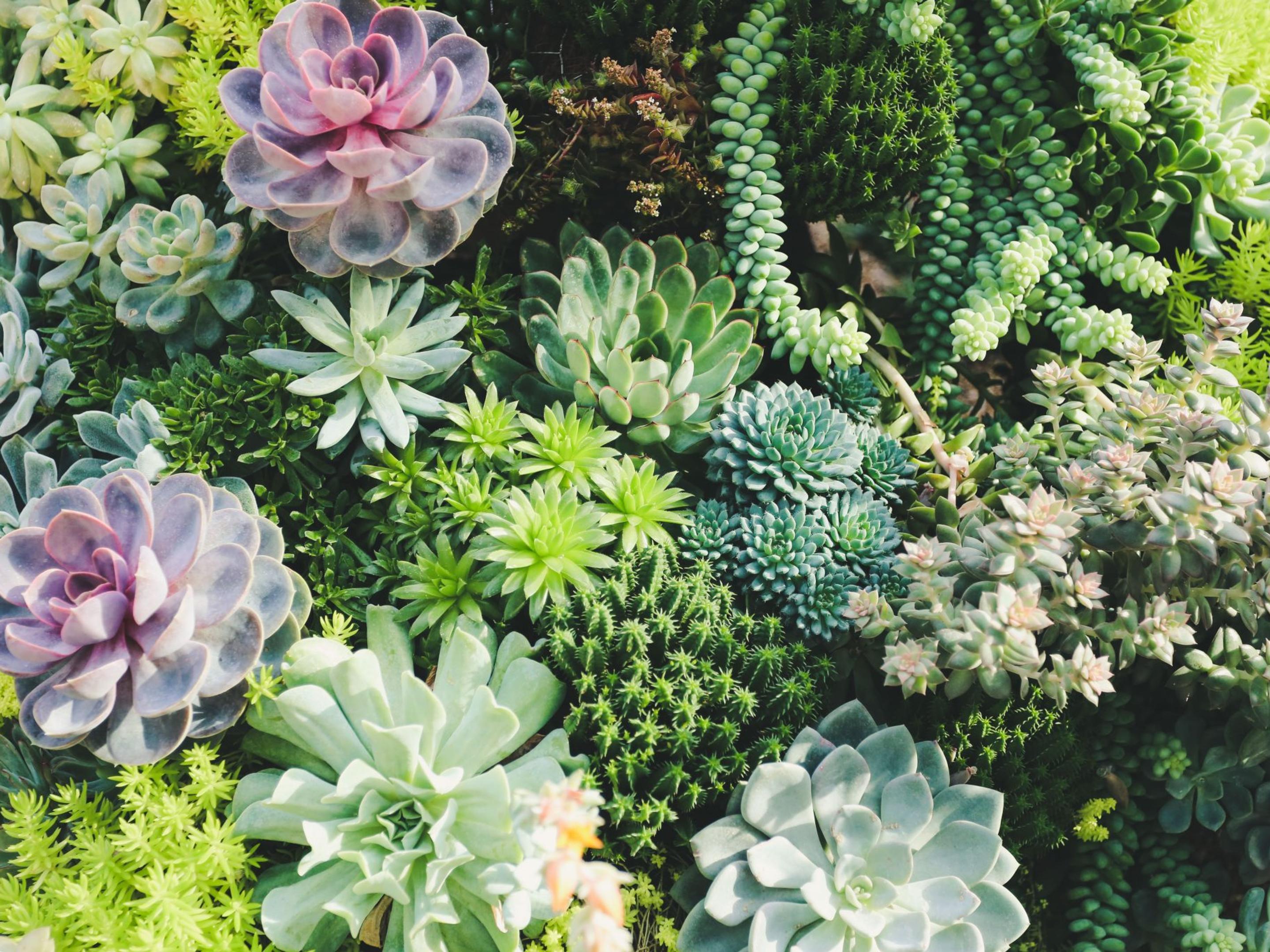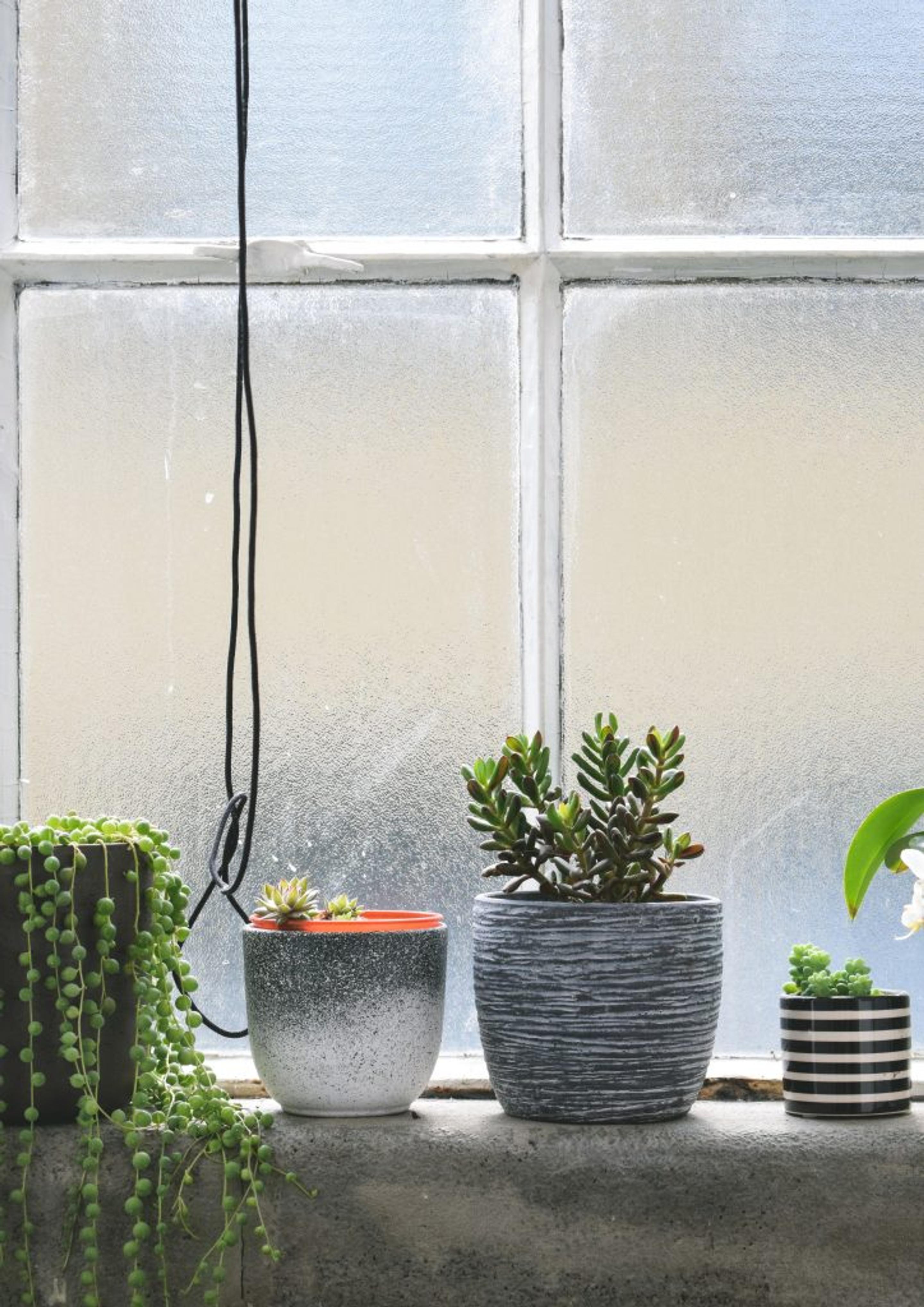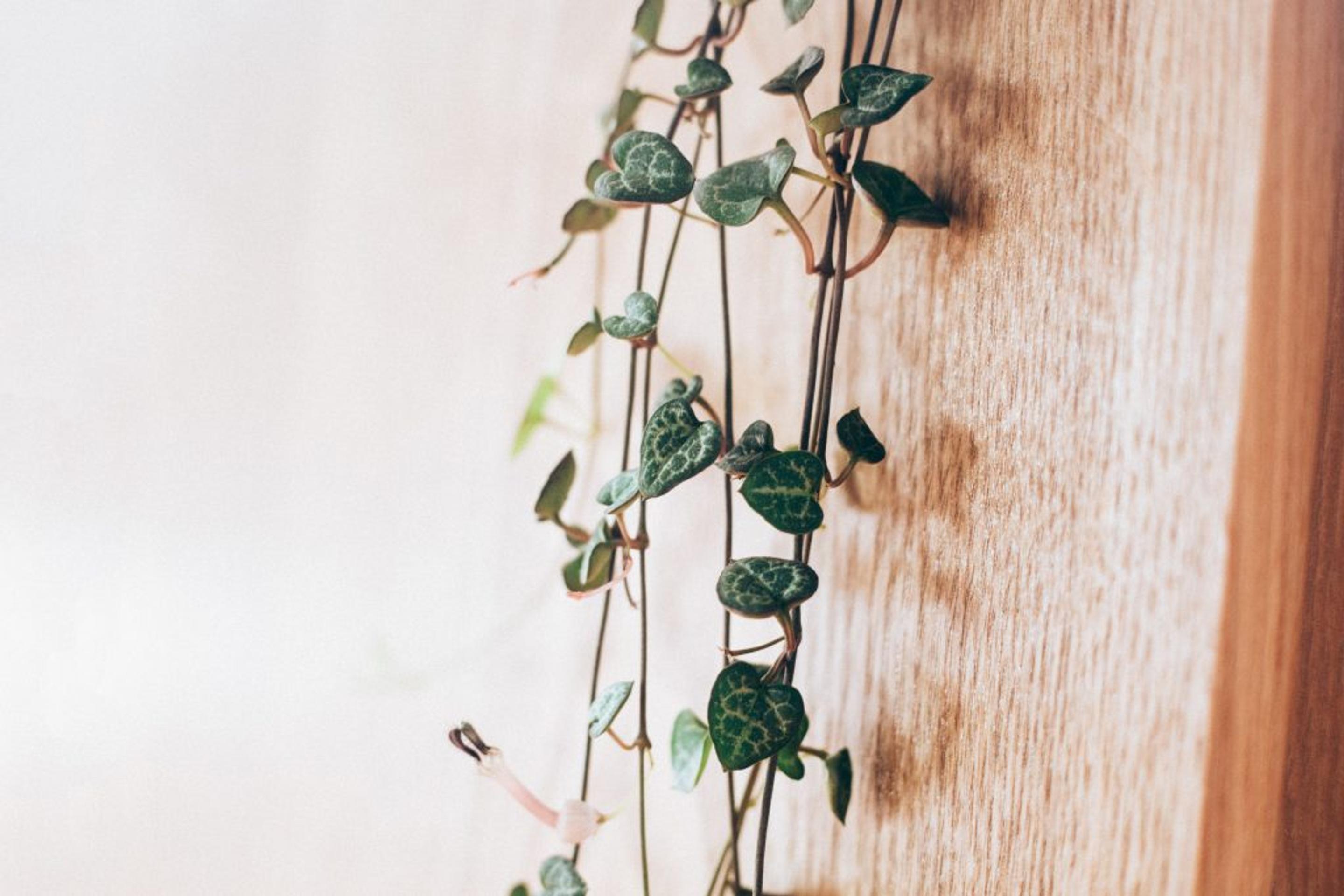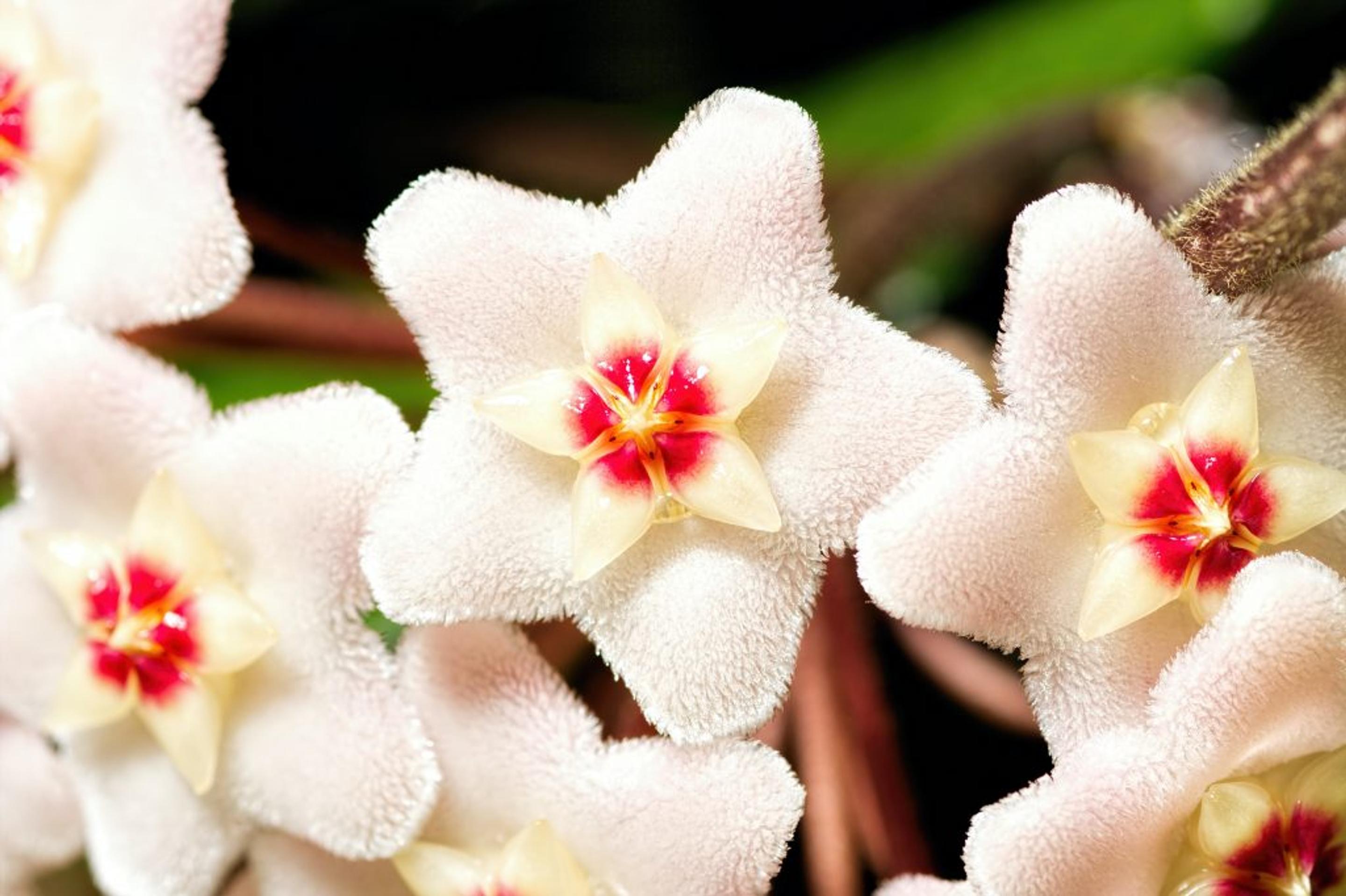
So you’re a skilled, seasoned plant parent.
- Pothos? Easy.
- Snake plant? Thriving.
- Air plants? You’re a pro.
You’re ready to kick it up a notch and really put those plant-parenting skills to the test!
So, where do you start? That’s where we come in.

Check out these 5 unique houseplants that are sure to put your expert plant-parent skills to the test!
5. String of Hearts

String of Hearts, otherwise known as Ceropegia woodii, is a draping plant known for its purple-hued, heart-shaped leaves.
These delicate beauties answer to quite a few names: rosary vine, chain of hearts, hearts on a string, and sweetheart vine, just to name a few.
Along the stems of these string-like vines are aerial tubers called bulbils. Often resembling small rosary beads, we can see where the name ‘rosary vine’ came from.
How to Care for: Don’t let their frail appearance scare you away, String of Hearts are still quite a forgiving plant in terms of care. As long as you keep watering it, it should just keep on growing.
Pro tip: Beware of overwatering. This sweet little vine will drown if excessively watered, so don’t give it a drink until the soil is completely dry and be sure to use well-draining soil.
As for light, String of Hearts, for the most part, does well in bright indirect light. Lower light will simply result in paler, light green petals.
4. Nerve Plant

Ok, this one’s pretty cool, are we right? The Nerve Plant, or Fittonia spp, is a spreading evergreen with intricately veined, forest green leaves.
With all those veins, how could you not strike a nerve…?
Too much?
Any-who, these low-growers are perfect for terrariums and bottle gardens, not to mention how adorable they’ll look on your window sill.
They usually grow to be about 3 to 6 inches tall with a trailing spread of about 12 to 18 inches.
Even better? This veiny little guy flowers!
Admittedly, not so much when grown as an indoor houseplant, but who knows? You are a skilled plant parent, after all. They will occasionally bloom with small red or yellow blossoms.
How to Care for: While the Nerve Plant may look pretty low maintenance, they do tend to have a bit of a temper.
They require constant high humidity levels and are extremely sensitive to strong, direct sunlight. They’ll sunburn quicker than a newborn baby on a hot day.
Instead, keep them in a north-facing window that gets bright, indirect sun.
Watering can be a bit of a challenge. Be sure to keep your Nerve Plant thoroughly watered, and mist them regularly to keep them from drying out and collapsing.
3. Living Stones

If you thought the Nerve Plant was cool, get a load of this.
Living Stones. Need we say more?
These unique plants are actually succulents that have evolved to resemble the pebbles and rocks that make up their native habitat in southern Africa.
These succulents are extremely small and remain low to the ground; they also grow very slowly, we’re talking, could take years to fill its pot with new leaves, slow. If properly cared for, they will begin to flower between the leaves. Amazing.
How to Care For: Unlike most succulents, Living Stones are a bit more temperamental. When it comes to watering specifically, too much water will cause these little pebbles to burst.
They also follow an annual cycle that you need to follow. In the summer, the plants are dormant. Lightly water them if they start looking shriveled, but in general, leave them be in the summer and winter.
They absolutely thrive in full sunlight, so be sure to give them as much light as possible.
2. Rex Begonia

No, we’re not talking about a T-Rex, but we are talking about Rex Begonia.
This charmer is admired for its gorgeous foliage. Its leaves can vary in shape, some taking on more of a heart-shape and others more ivy-like. Their show-stopping colors are what really make these a favorite among plant moms and dads everywhere. Often a mix of green, pink, or burgundy, good ol’ Rex can also include metallic shades of gray and silver.
How to Care for: These beauties are generally easy to care for. They enjoy moderate to bright indirect light and weekly waterings. Once the top inch of soil dries out, you’ll know it’s time for another watering.
They prefer high humidity but refrain from misting as this can lead to a mildew issue which, let’s be honest, nobody wants.
1. Hoyas

We know what you’re thinking, is this a plant or some kind of weird fuzzy keychain? Perhaps a sea urchin of sorts?
Allow us to introduce you to the Hoya family.
These waxy plants sure are something special. First things first, they smell like cinnamon, spice, and everything nice. Let’s be real here, what more could we ask for?
They come in many varieties, but the general consensus is that the award for most impressive variety goes to the Hoya imperialis, with their flowers measuring 10cm across. However, they do require grow lights and consistent light to bloom.
How to Care For: Hoyas prefer semi-humidity, about 50%, but some varieties require 60-70 %.
When it comes to light, they like a couple of hours of direct morning sun a day, but keep them away from south-facing windows in the summer.
Pro tip: Re-pot your Hoyas at least every 2 years.
Water them once a week or once the soil on top is dry. Fall back a bit in the autumn and winter to about once every 2 weeks.
Beginner plant parent? Don’t think we forgot about you! Check out last week’s blog: 5 Indoor Houseplants for the Brown Thumb for the top 5 plants to get you started!
Lovingly Momentmaker Spotlight! Check out these fresh, bountiful beauties at Lovingly affiliated florist, Dynasty Market & Blooms.


